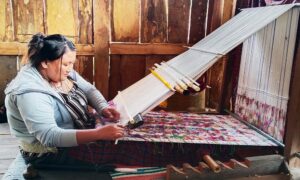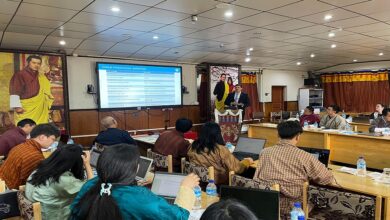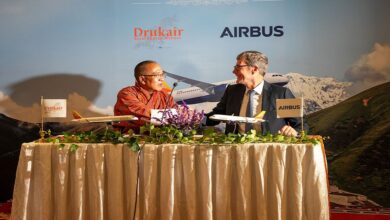Gender pay gap in Bhutan: Women earn less in both urban and rural areas
Despite the overall employment rate of nearly 97 percent, there are significant disparities in the labour market, particularly between rural and urban areas and across genders.
The latest Labour Force Survey Quarterly Report (LFSQR) reveals that women are underrepresented in higher-paying jobs and earn less than their male counterparts.
In the third quarter, the total labour force comprised 391,113, with 379,023 individuals employed. Rural regions outperformed urban areas, employing around 250,000 people compared to around 120,000 in urban areas.
Among the employed, women represent 146,560, equating to 95.8 percent of the total female labour force of 153,047. In contrast, 232,463 men are employed, making up 97.6 percent of the male labour force, which totals 238,065.
This data highlights a gap of 85,903 fewer employed women than men. Overall, women constitute only 38.7 percent of the total workforce, with 146,560 out of 379,023 employed individuals.
Another notable disparity is between rural and urban employment patterns.
Rural areas have a much larger share of workers in agriculture, forestry, and fisheries, with 63.52 percent employed in these sectors. Women account for 54.63 percent of this workforce, while men make up only 36.56 percent.
Of the 40,036 individuals working as managers, 19.86 percent of total employed are based in urban areas, while the remaining hold positions in rural areas. Similarly, out of the total 30,262 professionals, 14.45 percent of total employed are in urban areas, with men being more represented in the professional category.
More women hold managerial positions than men, with 12.61 percent of women working as managers compared to 9.27 percent of men. However, in professional roles, men have a higher presence—8.77 percent of men work as professionals, compared to 6.74 percent of women.
Women are more likely to work in clerical support (4.09 percent) and personal service roles (7.46 percent), while men are predominant as plant and machine operators (11.5 percent) and in craft-related trades (9.78 percent).
While rural areas employ more people overall, urban workers tend to enjoy more stable, regular incomes. In urban regions, 60.55 percent of the workforce—135,022 individuals—receive regular pay. In contrast, only 19.52 percent of rural workers fall into this category, with a significant proportion—32.96 percent—working as unpaid family workers in agriculture. In addition, 30.13 percent of the 78,138 individuals in rural agriculture are own-account workers.
Agriculture is the only sector where the number of employed women surpasses men, though most women in this sector are categorised as family workers—without direct earning.
Over half of the total employed women—54.81 percent—work in agriculture, compared to 36.66 percent of men. The largest proportion of women—31.63 percent—are family workers in agriculture, higher than in any other employment category.
However, more women than men are employed as own-account workers in agriculture, with 22.86 percent of women in this category compared to 19.2 percent of men.
In terms of income, the third LFSQR took in monthly income data for employed persons from those classified as paid employees, own account workers, and employers. The mean monthly income for this group was estimated at Nu 25,820.
In urban areas, the mean monthly income for men is Nu 34,473, while for women it is lower at Nu 28,429. The median income shows a smaller gap, with men earning Nu 26,000 compared to Nu 25,000 for women.
In rural areas, the gender gap is even more pronounced. Men earn an average of Nu 24,058, whereas women make Nu 15,557. The median income for rural men is Nu 20,000, double that of rural women, who earn only Nu 10,000.
Overall, when combining rural and urban data, the mean income stands at Nu 28,355 for men and Nu 20,744 for women, with median earnings of Nu 21,000 for men and Nu 15,000 for women.





